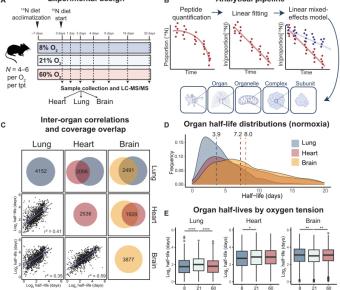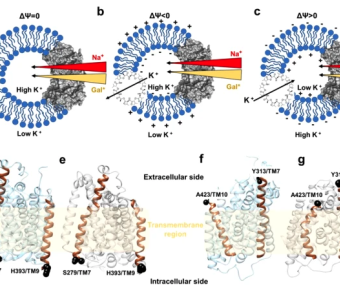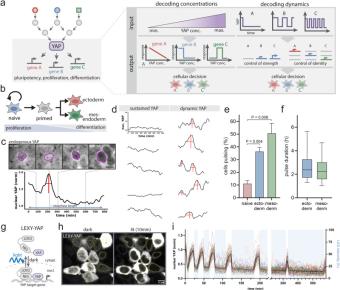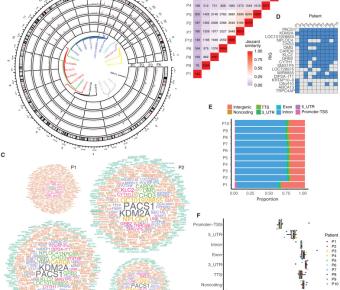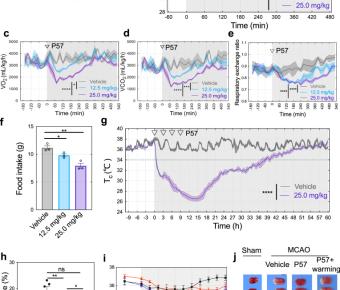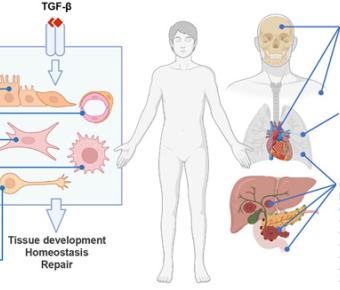In vivo protein turnover rates in varying oxygen tensions nominate MYBBP1A as a mediator of the hyperoxia response
December 08, 2023
Oxygen deprivation and excess are both toxic. Thus, the body's ability to adapt to varying oxygen tensions is critical for survival. While the hypoxia transcriptional response has been well studied, the post-translational effects of oxygen have been underexplored. In this study, we systematically... Selenoprotein deficiency disorder predisposes to aortic aneurysm formation.
December 02, 2023
Aortic aneurysms, which may dissect or rupture acutely and be lethal, can be a part of multisystem disorders that have a heritable basis. We report four patients with deficiency of selenocysteine-containing proteins due to selenocysteine Insertion Sequence Binding Protein 2 (SECISBP2) mutations who... Membrane potential accelerates sugar uptake by stabilizing the outward facing conformation of the Na/glucose symporter vSGLT
November 08, 2023
Sodium-dependent glucose transporters (SGLTs) couple a downhill Na+ ion gradient to actively transport sugars. Here, we investigate the impact of the membrane potential on vSGLT structure and function using sugar uptake assays, double electron-electron resonance (DEER), electrostatic calculations,... Primary cilia control oligodendrocyte precursor cell proliferation in white matter injury via Hedgehog-independent CREB signaling.
October 31, 2023
Remyelination after white matter injury (WMI) often fails in diseases such as multiple sclerosis because of improper recruitment and repopulation of oligodendrocyte precursor cells (OPCs) in lesions. How OPCs elicit specific intracellular programs in response to a chemically and mechanically... Optogenetic control of YAP reveals a dynamic communication code for stem cell fate and proliferation
October 30, 2023
YAP is a transcriptional regulator that controls pluripotency, cell fate, and proliferation. How cells ensure the selective activation of YAP effector genes is unknown. This knowledge is essential to rationally control cellular decision-making. Here we leverage optogenetics, live-imaging of... Integrome signatures of lentiviral gene therapy for SCID-X1 patients.
October 06, 2023
Lentiviral vector (LV)-based gene therapy holds promise for a broad range of diseases. Analyzing more than 280,000 vector integration sites (VISs) in 273 samples from 10 patients with X-linked severe combined immunodeficiency (SCID-X1), we discovered shared LV integrome signatures in 9 of 10... Natural product P57 induces hypothermia through targeting pyridoxal kinase.
September 26, 2023
Induction of hypothermia during hibernation/torpor enables certain mammals to survive under extreme environmental conditions. However, pharmacological induction of hypothermia in most mammals remains a huge challenge. Here we show that a natural product P57 promptly induces hypothermia and... TGF-β signaling in health and disease
September 14, 2023
The TGF-β regulatory system plays crucial roles in the preservation of organismal integrity. TGF-β signaling controls metazoan embryo development, tissue homeostasis, and injury repair through coordinated effects on cell proliferation, phenotypic plasticity, migration, metabolic adaptation, and... Seriously cilia: A tiny organelle illuminates evolution, disease, and intercellular communication
August 07, 2023
The borders between cell and developmental biology, which have always been permeable, have largely dissolved. One manifestation is the blossoming of cilia biology, with cell and developmental approaches (increasingly complemented by human genetics, structural insights, and computational analysis)... Spatial and temporal organization of the genome: Current state and future aims of the 4D nucleome project.
August 03, 2023
The four-dimensional nucleome (4DN) consortium studies the architecture of the genome and the nucleus in space and time. We summarize progress by the consortium and highlight the development of technologies for (1) mapping genome folding and identifying roles of nuclear components and bodies,... 
